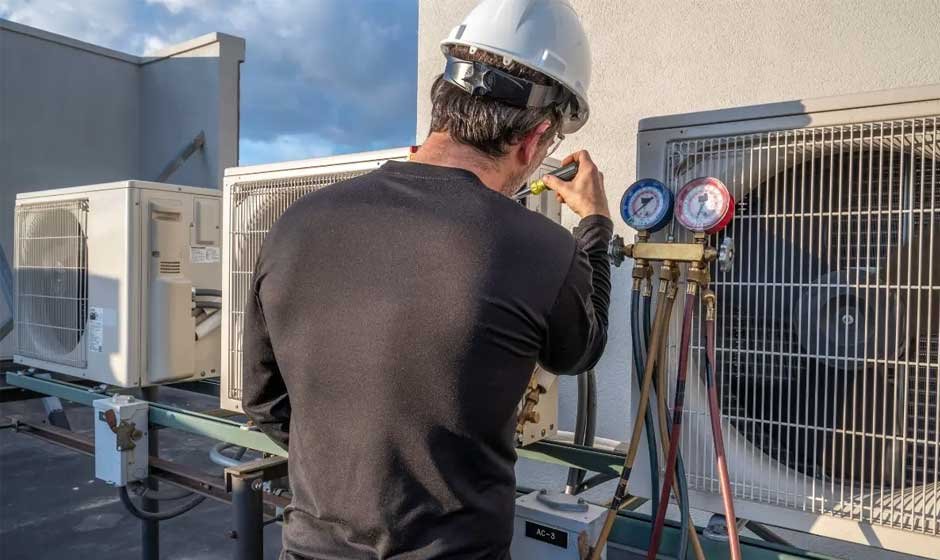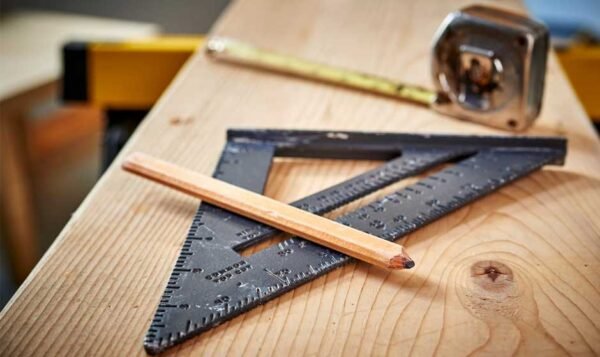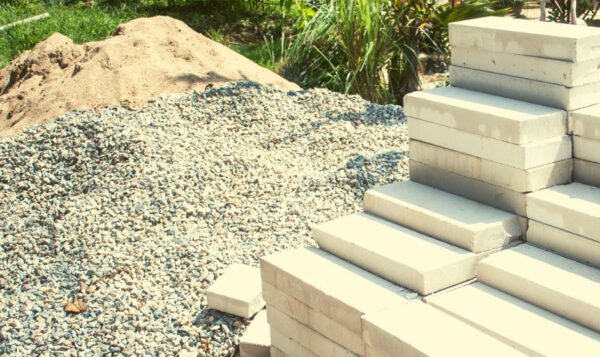Best Ways To Lower Your Energy Bills With HVAC Upgrades

Regular HVAC maintenance isn’t just about preventing breakdowns, it’s one of the smartest ways to keep your energy bills in check. By making sure your system runs efficiently year-round, you can lower costs, extend equipment life, and stay comfortable without overworking your heating and cooling system.
HVAC Solutions To Reduce Energy Bills That Work
HVAC systems work hardest to maintain comfort year-round, and they’re responsible for the largest share of your home’s energy use, often 40-60% of total consumption. Heating and cooling pull a lot of electricity (or gas) since they run for long cycles, react to constant outdoor temperature changes, and push air through ducts that may not be perfectly sealed or insulated.
Even small inefficiencies, like leaky ductwork, dirty filters, or poor insulation, force your system to run longer and harder. It’s not just the equipment’s energy draw, but how efficiently your home holds onto conditioned air that determines your average heating and cooling bill.
Every time outdoor temperatures swing, your system works to rebalance what your home naturally loses or gains. In most homes, tiny leaks, thin insulation, and outdated ducts are the real energy drainers, not just the unit itself. Even if your furnace or AC is efficient, if your house can’t hold the comfort it creates, you’re basically paying to heat or cool the outdoors.
That’s why HVAC solutions to reduce energy bills go beyond just swapping out old units, they tackle how your whole system interacts with your home’s structure to reduce energy bills and deliver lasting comfort.
How To Save On Heating Bill
You can stay warm without paying for wasted heat by focusing on efficiency, not austerity. Forget the “put on a sweater” advice, real savings come from getting more comfort per degree and lowering your heating bill the smart way.
Use smart zoning or programmable thermostats to match your heating schedule to your lifestyle instead of heating empty rooms. Pre-heat smarter: use your thermostat’s scheduling feature to warm the house 30 minutes before you wake, not an hour. Skip the big daytime swings, constant temperature yo-yoing uses more fuel than steady, moderate settings.
Seal leaks and insulate well, especially around windows, attic hatches, and ducts, it’s like wrapping your home in a warm blanket. Drafts around recessed lights and outlets waste more heat than windows do, so seal them too.
Run ceiling fans clockwise in winter to push warm air back down instead of letting it collect near the ceiling.
Get regular heating maintenance, because dust, wear, and poor airflow silently drive up energy use. The goal isn’t turning the thermostat down, it’s making every degree count. You’re not saving energy by being uncomfortable, you’re saving by making your system work efficiently within your comfort zone. Smart HVAC solutions to reduce energy bills make this easy and can significantly lower energy bills through simple habit changes.
HVAC Tune Up To Lower Energy Bills
A professional tune-up targets energy waste points you can’t see. It’s more diagnostic science than a visual inspection, not about “checking boxes,” but about restoring lost efficiency.
The most impactful steps include coil cleaning (both indoor evaporator and outdoor condenser) to restore full heat transfer efficiency, checking refrigerant charge, too high or too low both waste energy, and balancing it properly since even a 10% imbalance can spike energy use by 20%.
Technicians also tighten electrical connections and test motors to prevent voltage drops, calibrate the thermostat to ensure what you set is what you get, and measure airflow and static pressure to uncover bottlenecks before they raise your heating bill or cooling bill.
Combustion analysis fine-tunes your furnace’s burn ratio so you’re heating air, not wasting fuel. Inspecting ductwork for leaks or blockages rounds out the process, since airflow issues often hide behind comfort problems.
Regular tune-ups don’t just prevent breakdowns, they can reduce energy bills by 10-20%. When done right, you feel it in your comfort, and your wallet, with a noticeably lower energy bill.
Upgrades That Help Reduce Energy Bill Fast
The upgrades that move the needle most are those that make your system work smarter, not harder. High-efficiency variable-speed HVAC units (SEER2-rated 18+ or ENERGY STAR-certified) adapt output to demand in real time, eliminating the “blast and rest” inefficiency of older systems and using less energy overall.
Heat pumps with inverter technology are game changers, they provide both heating and cooling at up to three times the efficiency of standard systems, acting like an “energy multiplier” that can dramatically reduce energy bills across the year.
Smart thermostats that learn your patterns and zoned HVAC systems that let you heat or cool only the spaces you use help stop conditioning empty rooms, one of the most practical HVAC solutions to reduce energy bills available today.
Duct redesigns can also deliver big long-term savings and improve overall performance, trimming down the average heating and cooling bill in a way you’ll notice after the first season.
Cut the Average Heating and Cooling Bill With a New System
Old systems are like cars with 200,000 miles, they still run, but not efficiently. They don’t just cost you money; they condition you to accept poor comfort as normal.
Replacing a 10-15-year-old unit can cut energy use by 20-40%, reduce repair costs, and often comes with rebates or tax credits that soften the upfront hit. The payoff isn’t just financial, it’s comfort consistency, quieter performance, cleaner air, and peace of mind that your system won’t fail during a cold snap or heat wave.
With today’s federal rebates and utility incentives, the math often works out faster than people expect. In 10 years, you won’t remember the price, but you’ll remember the comfort and a much lower energy bill. Investing in newer systems can transform your average heating and cooling bill while also reducing your cooling bill during peak months.
Insulation and Ductwork HVAC Solutions To Reduce Energy Bills
Think of your HVAC as the “heart” and your ducts, insulation, and ventilation as the “circulatory system.” If that system leaks or clogs, efficiency collapses.
Insulation keeps conditioned air where it belongs, and sealed, insulated ducts prevent the 20-30% air loss common in older homes. Your system’s efficiency rating assumes perfect ducts and insulation, conditions most homes don’t meet, so fixing that gap can add the equivalent of two SEER points or more without touching the unit.
Proper ventilation ensures fresh air without losing heat. Energy recovery ventilators (ERVs) reclaim heat or coolness from exhausted air, letting you breathe fresher air without wasting what you already paid to condition.
These “hidden upgrades” are often the most underrated HVAC solutions to reduce energy bills, helping you lower energy bills and stretch comfort farther with the same equipment.
How To Reduce Energy Bills With HVAC
The right settings and habits can cut costs significantly without changing comfort. It’s not about memorizing thermostat numbers, it’s about timing, airflow, and using patterns to your advantage.
Set thermostats wisely: 68°F in winter (lower when sleeping or away), 78°F in summer (higher when away). Use “eco” or “away” modes on smart thermostats, and let them learn your habits, you’ll often find 2-4 hours a day of unnecessary runtime that drives up your heating bill.
Run heating and cooling in anticipation, not reaction, preheat or precool before outdoor temperatures peak. Use “fan only” mode for a short period after the system shuts off to circulate leftover conditioned air.
Keep vents open for balanced airflow, since closing them raises pressure and wastes energy. Change filters monthly during peak seasons to maintain steady airflow and prevent a higher cooling bill.
Leverage natural warmth and coolness, open blinds on sunny winter days, close them during summer afternoons, and check system modes seasonally, since many homeowners accidentally leave heat pumps in the wrong mode year-round.
Smarter use isn’t about denial of comfort, it’s about timing and efficiency. With these small shifts, you’ll reduce energy bills, shrink your average heating and cooling bill, and enjoy steady comfort throughout the year.
HVAC Mistakes Raising Your Cooling Bill
Even brand-new systems can underperform if the home setup is flawed. A new unit can’t compensate for old inefficiencies, it needs the right environment to shine.
Improper sizing, too large or too small, wastes energy, and poor duct design or unsealed connections can leak up to 25% of conditioned air. Neglecting filter changes, blocking vents with furniture or rugs, or skipping balancing dampers all restrict airflow and cause uneven distribution.
Thermostat issues also play a role, placement near sunny windows or drafty vents skews readings, and leaving factory settings untouched means the system isn’t tuned to your climate.
Finally, skipping post-installation commissioning and failing to update insulation both undermine the performance you just paid for.
The biggest energy killer? Assuming “new” means “optimized.” Performance depends on calibration, not just equipment, fixing these mistakes helps reduce energy bills and cuts your cooling bill significantly.
Energy Audits and HVAC Solutions To Reduce Energy Bills
Before investing thousands in a new system, an energy audit helps pinpoint where efficiency losses really happen. If your home feels drafty, has uneven temperatures, or high bills despite decent equipment, get an audit first.
It uses blower door tests, infrared imaging, and airflow measurements to identify leaks, insulation gaps, and duct losses, essentially mapping how your home “breathes.” Once you fix those issues, your next HVAC system can often be smaller, quieter, and cheaper to operate.
It’s the smartest first step because addressing the building envelope before (or along with) upgrading HVAC ensures the new system performs at its rated efficiency from day one. It’s one of the most reliable HVAC solutions to reduce energy bills, keeping your heating bill and cooling bill predictable and helping you maintain a consistently lower energy bill all year.



